Report of Cover Crop Survey of Nebraska Farmers
Dec. 23, 2015
The purpose of this survey was to assess the current level of cover crop use and gather insights from farmers in Nebraska regarding the use of cover crops. This survey was conducted in January and February of 2015 using paper surveys distributed to farmers attending Pesticide Safety Education Program Courses, Crop Production Clinics and those attending the Nebraska no-till conferences. A total of 258 farmers who attended these meetings participated in the survey. There were multiple versions of the survey with varying questions and not all participants completed every question; therefore, the number of responses that were analyzed for each question is indicated (n=number answering).
Demographics of Participating Farmers
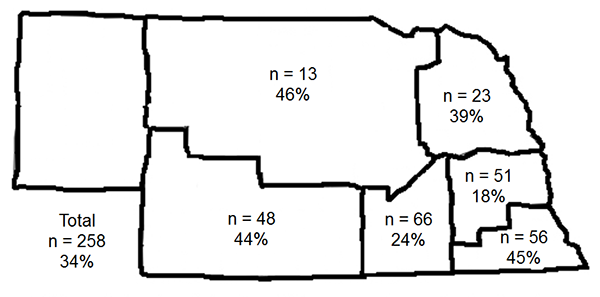

Of the 258 farmers who participated, 87 (34%) reported using cover crops in the 2014 growing season. The farmers who planted cover crops directly managed 135,309 acres, with 34% of those acres being rain-fed. The 171 farmers who did not plant cover crops last year reported directly managing 204,339 acres, with 34% of those acres being rain-fed. Of those who did not plant cover crops last year, only 29% (46/151) reported that they had ever planted cover crops
The profile of income sources of those who did plant cover crops (n = 87) and those who did not (n= 171) appeared to be similar, with 76% of those who planted cover crops and 77% of those who did not plant cover crops having over 50% of their income from grain crop production. Of the farmers who did not plant cover crops, 63% reported having no off-farm income and 35% had some income from livestock production. Similarly, of those who planted cover crops 66% had no off-farm income and 46% had some income from livestock production. Those who did not plant cover crops reported that 48% of the acres they managed were used to produce dry corn grain and 31% were used for soybean production.
Similarly, those who planted cover crops reported that 42% of their acres were used to produce dry corn grain and 32% were used for soybean production. However, size of operation did appear to differ. Of the farmers who planted cover crops, 33% (29/87) had operations greater than 1,500 acres while only 17% (29/171) of farmers who did not plant cover crops managed more than 1500 acres.
Both those who planted cover crops (44%; 11/25) and those who did not (49%; 61/124) ranked time and labor required as a major issue to its adoption. The cost of cover crops relative to the benefits was also ranked as a major issue by both those who planted cover crops (42%; 8/25) and those who did not (32%; 51/123). Water use was reported to be a major issue for those who did not plant cover crops (43%; 53/125); while only 16% (3/24) of those who planted cover crops reported water as a major issue.
Perceived Barriers with Cover Crop Use
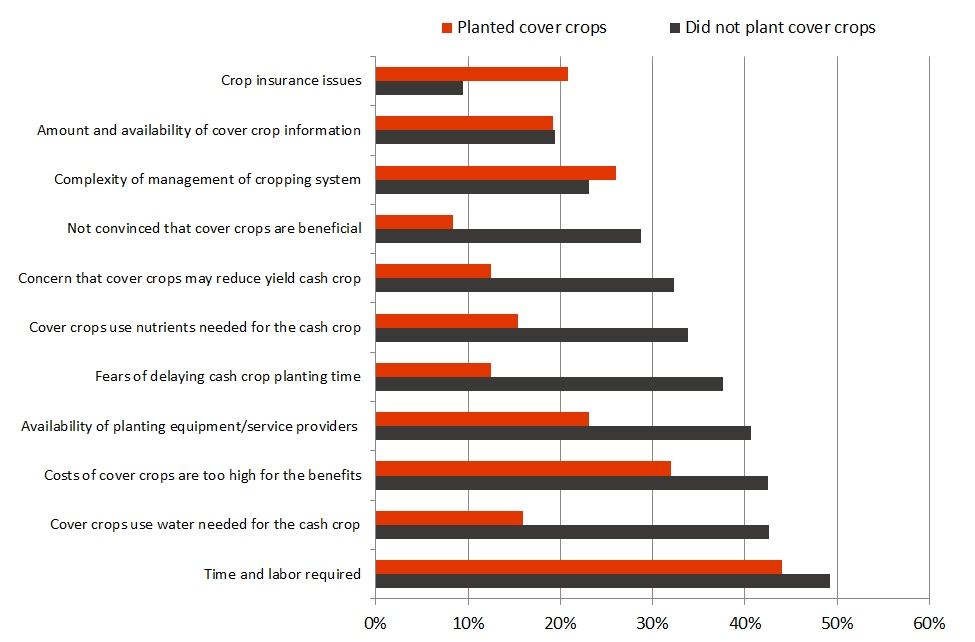
Both those who planted cover crops (44%; 11/25) and those who did not (49%; 61/124) ranked time and labor required as a major issue to its adoption. The cost of cover crops relative to the benefits was also ranked as a major issue by both those who planted cover crops (42%; 8/25) and those who did not (32%; 51/123). Water use was reported to be a major issue for those who did not plant cover crops (43%; 53/125); while only 16% (3/24) of those who planted cover crops reported water as a major issue.
Cropping Systems with Cover Crop Use
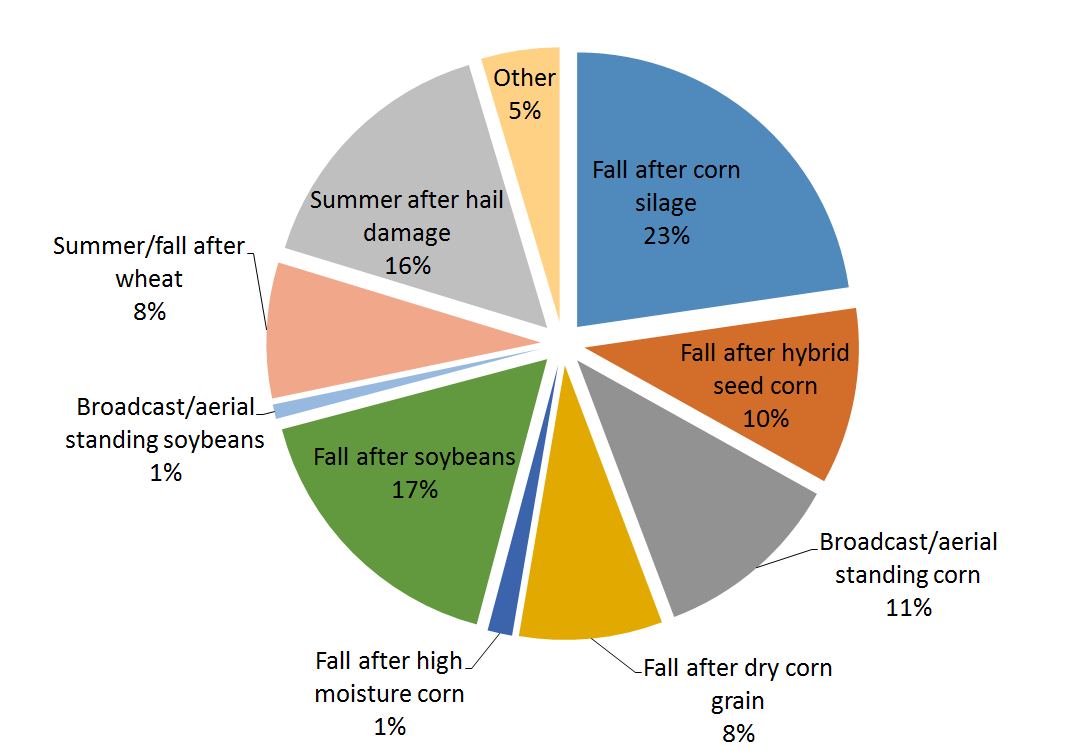
Of the 27,589 acres that were reported by the 87 farmers as being planted to cover crops, 23% were planted in the fall after corn silage. However, corn silage acres only made up 6% of the acres managed by those planting cover crops. When evaluated as a percent of the corn silage acres managed by those who planted cover crops, 77% of corn silage acres managed were planted to cover crops. When compared across all the corn silage acres reported by all participants (12,283 acres) in this survey, 51% of the corn silage acres were planted to cover crops.
Cover crops planted in seed corn production represented 10% of the cover crop acres planted. As with corn silage, seed corn acres made up a relatively large proportion of the cover cropped acres when considering the total number of cropped acres in seed corn production.
Cover crops were planted on 32% (2870 of 9062 seed corn acres) of the seed corn acres managed by the participants of this survey.
Of the cover crop acres planted,18% were planted in the fall after soybean harvest or broadcast seeded into standing soybeans. This only represented 11% of the soybean acres managed by farmers who planted cover crops. When compared across all the soybean acres reported by survey participants (106,740 acres), only 4% of the soybean acres were planted to cover crops. Similarly, the dry corn grain and high moisture corn acres made up 20% of the cover crop acres planted, but only represented 3% (5806/ 181,288 acres) of the corn acres managed by the participants in this survey.
Reasons for Planting Cover Crops
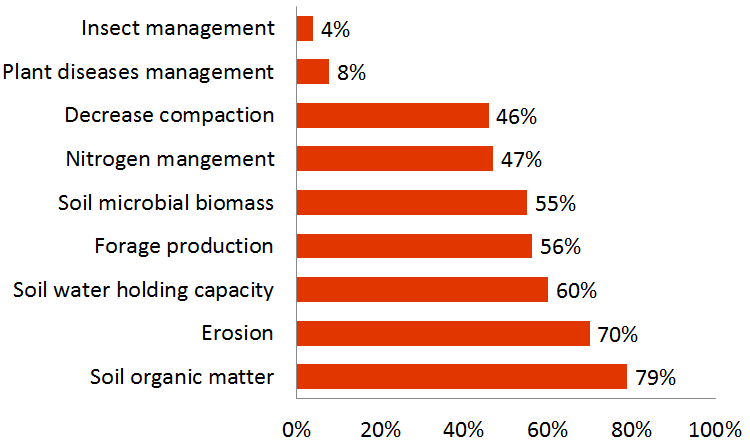
Cover Crop Species Planted
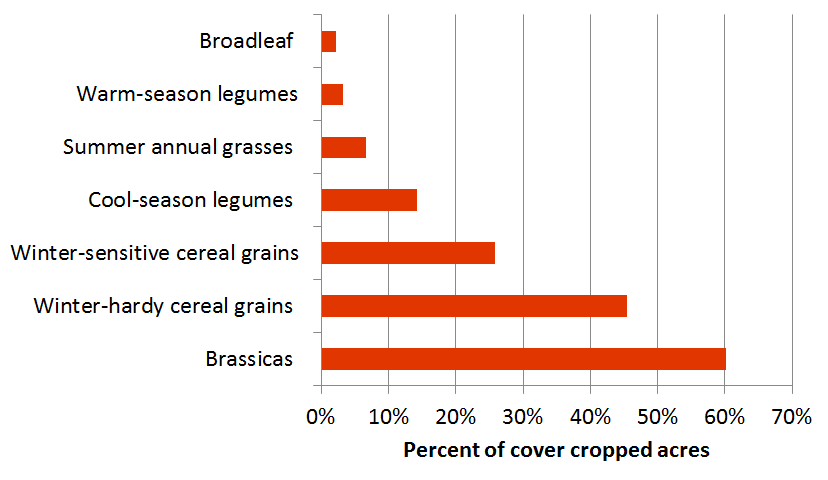
Of the 38 farmers responding to the question on number of acres of planted to various cover crop species, the majority (25) planted brassicas (turnips, radishes, collards, etc.) with 60% of the cover crop acres containing a brassica. The second most commonly used class of cover crop was winter hardy small cereal grain. These were planted by 20 of the 38 farmers, resulting in 45% of the cover crop acres containing one of these species: cereal rye, winter wheat, winter barley or winter triticale. Only 8 of the 38 farmers planted winter-sensitive cereal grains (oat, spring wheat, spring barley or spring triticale), resulting in 26% of the cover cropped acres containing a winter sensitive small grain.
Grazing of Cover Crops
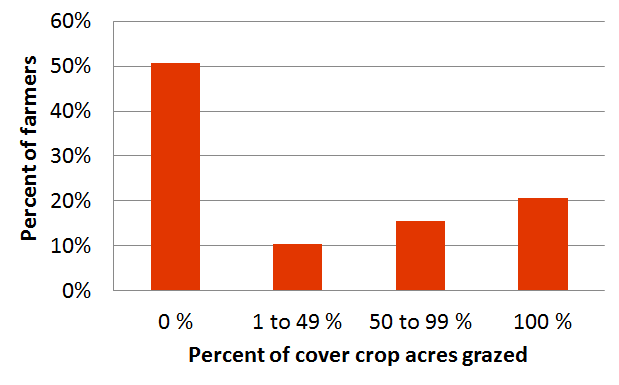
Of farmers who planted cover crops 51% (41/80) did not graze any of their cover crop acres, and 21% grazed all of the cover crop acres that they planted.
Acknowledgements
The authors would like to thank all of the farmers who provided information. Without their willingness to take the time to complete surveys like this one, we would not be able to assess current management practices and determine research and education needs.
A print-friendly copy of the Cover Crop Survey results is available.
Mary Drewnoski, Nathan Muller, Randy Saner, Paul Jasa, Gary Zoubek, Jenny Rees, Katie Pekarek, Roger Elmore, Daren Redfearn and Gary Lesoing
Online Master of Science in Agronomy
With a focus on industry applications and research, the online program is designed with maximum flexibility for today's working professionals.
